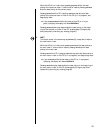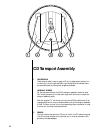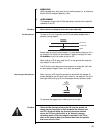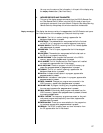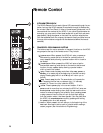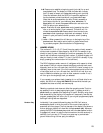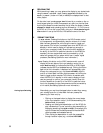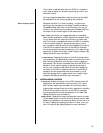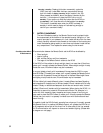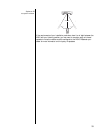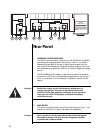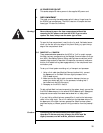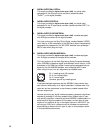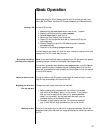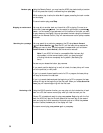
31
This function is available even when the Nº31.5 is in standby, in
which case its display will activate long enough to confirm your
command visually.
You may change the input button back to controlling the digital
source selection at any time by repeating this procedure.
Direct access to inputs Whenever the Nº31.5 is in either its analog- or digital-input
switching mode (as shown by the display indicating something
like No30 on No31 rather than its normal display), you may go
directly to any desired input by pressing the corresponding num-
ber button on the numeric keypad of the remote control.
mute: Pressing this button will engage the mute of a compatible
Mark Levinson preamplifier without stopping the transport. Press-
ing it a second time will restore the volume to its previous set-
ting. This function is available even when the Nº31.5 is in standby,
in which case its display will activate long enough to confirm
your command visually. Since this function depends on the ability
of the Nº31.5 to pass the instruction to the Nº38 (for example),
the two components must be connected by a Link cable, and op-
erate within a system which has a “master” digital processor. (See
Setting Options for more information.)
(–) lower volume: Pressing this button on the Nº31.5 remote control
will transparently and automatically lower the volume of a Linked
Mark Levinson preamplifier, minimizing the need to juggle mul-
tiple remotes. This function is available even when the Nº31.5 is in
standby, in which case its display will activate long enough to
confirm your command visually. Since this function depends on
the ability of the Nº31.5 to pass the instruction to the Nº38 (for
example), the two components must be connected by a Link
cable, and operate within a system which has a “master” digital
processor. (See Setting Options for more information.)
6 MISCELLANEOUS CONTROLS
d/a polarity: Pressing this button on the Nº31.5 remote control will
transparently and automatically invert the polarity of a Linked
Mark Levinson digital audio processor, minimizing the need to
juggle multiple remotes. Since this function depends on the ability
of the Nº31.5 to pass the instruction to the Nº36 (for example),
the two components must be connected by a Link cable. (See
Setting Options for more information.)
display mode: Pressing this button duplicates the function of press-
ing the mode button on the Nº31.5, cycling through the four time
modes
(time elapsed or time remaining, either on the track or on
the disc). Pressing and holding this button will allow you to set
your Link options. (See Setting Options for more information.)



